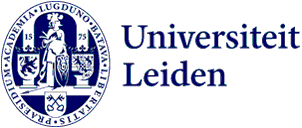
Life cycle of comets near other star resembles that of our solar system
The life cycle of comets near the star Beta Pictoris is similar to that of comets in our own solar system. This is the conclusion of a team of astronomers from the Netherlands, France and Brazil. It seems that, just like in our own solar system, there are fewer comets as the star gets older. The researchers, including Matthew Kenworthy from Leiden University, will soon publish their findings in the journal Scientific Reports.
The study builds on results from 2019 when space mission TESS found its first exocomets near Beta Pictoris. Hints of exocomets have been observed around that star and others before, but TESS provided stronger evidence.
For the researchers, the result of TESS in 2019 tasted like more. In recent years, they have seen thirty comets move past the star. This has allowed them to create a so-called size distribution. It turns out that this size distribution is surprisingly similar to the size distribution in our solar system. This suggests that, just like in our solar system, there are fewer comets as the associated star gets older.
In the future, researchers want to measure the composition of the exocomets. They will also investigate how comets contribute to 'bringing' water to planets.
About Bèta Pictoris
Beta Pictoris is 63 light years away from Earth in the southern constellation of Painter. The star is only 23 million years young and is surrounded by a disc of gas and dust. The star has been a loved object for astronomers since the 1980s. At least two exoplanets and several exocomets orbit the star.
This article appeared as a news item on Astronomie.nl
Photo: Artist's impression of the exo-comets in the planetary system around the star Beta Pictoris. (c) Michaela Pink
Scientific article
Exocomets size distribution in The β Pictoris Planetary System. By: Alain Lecavelier des Etangs, Lucie Cros, Guillaume Hébrard, Eder Martioli, Marc Duquesnoy, Matthew Kenworthy, Flavien Kiefer, Sylvestre Lacour, Anne-Marie Lagrange, Nadège Meunier & Alfred Vidal-Madjar. Accepted for publication in Scientific Reports. (preprint)
